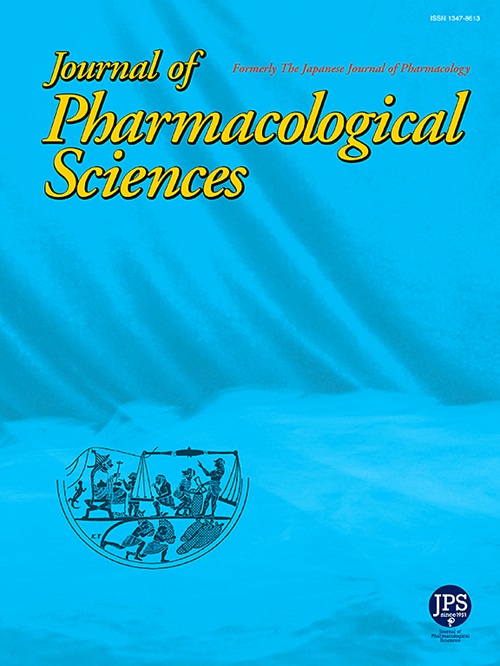Mirogabalin and pregabalin alleviate nociplastic sensitization induced by chemogenetic activation of the central amygdala neurons in rodents
IF 2.9
3区 医学
Q2 PHARMACOLOGY & PHARMACY
引用次数: 0
Abstract
Nociplastic pain represents the third mechanistic descriptor of pain, alongside neuropathic and nociceptive pain, as proposed in 2017 by the International Association for the Study of Pain (IASP). It describes pain occurring in the absence of nociceptor activation, tissue damage, or neuropathy. The underlying brain mechanisms of nociplastic pain remain poorly understood. Despite the potentially large patient population with chronic pain of this class, effective pharmacological treatments for nociplastic pain are still limited, highlighting the urgent need for drug development using appropriate preclinical models.
In this study, we investigated the anti-sensitization effects of two gabapentinoids—mirogabalin besylate (MGB) and pregabalin (PGB)—using a rodent model of nociplastic pain. This model involves experimental excitation of central amygdala neurons via designer receptors exclusively activated by designer drugs (DREADDs), causing widespread sensitization. Administration of an artificial ligand, deschloroclozapine (DCZ; 0.1 mg/kg, i.p.), significantly reduced the 50 %-paw withdrawal threshold, which was significantly elevated by MGB (10 mg/kg, i.p.) and PGB (30 mg/kg, i.p.), restoring it to levels not significantly different from the pre-DCZ baseline. We conclude that MGB and PGB alleviate widespread sensitization in this nociplastic pain model, likely through their action on α2δ-1 subunits within brain circuits that regulate pain sensitivity.
米罗巴林和普瑞巴林可减轻鼠类中央杏仁核神经元化学激活引起的致伤性敏化
国际疼痛研究协会(IASP)于2017年提出,伤害性疼痛是继神经性疼痛和伤害性疼痛之后的第三种疼痛描述机制。它描述了在没有伤害感受器激活、组织损伤或神经病变的情况下发生的疼痛。伤害性疼痛的潜在大脑机制仍然知之甚少。尽管这类慢性疼痛的患者群体可能很大,但对伤害性疼痛的有效药物治疗仍然有限,这突出了迫切需要使用适当的临床前模型进行药物开发。在这项研究中,我们研究了两种加巴喷丁类药物-苯甲酸米罗巴林(MGB)和普瑞巴林(PGB)的抗致敏作用-使用啮齿动物致敏性疼痛模型。该模型涉及通过专门由设计药物(DREADDs)激活的设计受体对中央杏仁核神经元的实验性兴奋,引起广泛的致敏。人工配体去氯氮平(DCZ;0.1 mg/kg, i.p.)显著降低了50% -爪戒断阈值,MGB (10 mg/kg, i.p.)和PGB (30 mg/kg, i.p.)显著提高了该阈值,使其恢复到与dcz前基线无显著差异的水平。我们得出结论,MGB和PGB可能通过作用于调节疼痛敏感性的脑回路中的α2δ-1亚基,减轻了这种致敏性疼痛模型中的广泛致敏性。
本文章由计算机程序翻译,如有差异,请以英文原文为准。
求助全文
约1分钟内获得全文
求助全文
来源期刊
CiteScore
6.20
自引率
2.90%
发文量
104
审稿时长
31 days
期刊介绍:
Journal of Pharmacological Sciences (JPS) is an international open access journal intended for the advancement of pharmacological sciences in the world. The Journal welcomes submissions in all fields of experimental and clinical pharmacology, including neuroscience, and biochemical, cellular, and molecular pharmacology for publication as Reviews, Full Papers or Short Communications. Short Communications are short research article intended to provide novel and exciting pharmacological findings. Manuscripts concerning descriptive case reports, pharmacokinetic and pharmacodynamic studies without pharmacological mechanism and dose-response determinations are not acceptable and will be rejected without peer review. The ethnopharmacological studies are also out of the scope of this journal. Furthermore, JPS does not publish work on the actions of biological extracts unknown chemical composition.

 求助内容:
求助内容: 应助结果提醒方式:
应助结果提醒方式:


